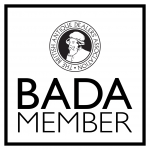No products were found matching your selection.

Matthew Boulton & John Fothergill
Matthew Boulton was a craftsman based in Birmingham. He was not formally a goldsmith or silversmith, but made a great contribution to the craft, and became the greatest manufacturer of Sheffield plate in the 18th century using Robert Adams and James Wyatt designs in the neoclassical style.
Matthew was the son of a toy maker and silver stamper who specialised in shoe buckles. He went into partnership with his father in 1749 and took it over on his father’s death in 1759.
In 1761, he realised his ambition of establishing a factory where toy trade craftsmen worked together under one roof, enabling him to reap the rewards of reducing overheads and gaining wholesale and retail profits.
He went into an unofficial partnership with John Fothergill in 1762, who acted as a travelling salesman for his wares. They focused on making steel toys and later buttons and buckles in a variety of metals including silver.
They began to produce items in Sheffield plate in 1762, and were among the first to use the ‘Sterling silver thread’ technique to adorn edges of items and hide the underlying copper. They soon became the largest maker of Sheffield plate in the country and expanded their business to produce bijouterie and objets d’art in ormolu, pinchbeck and tortoiseshell.
Boulton started manufacturing in solid silver in 1765 and had to send their items to the Chester Assay Office for marking which was 72 miles away. Boulton petitioned for an assay office in Birmingham, and this was granted in 1773 along with one for Sheffield. Boulton and Fothergill entered their joint mark and, after Fothergill died in 1782, Boulton used his initials alone. In 1784 he registered his mark at the new Sheffield assay office as ‘twin suns’ under the name of Boulton M & Co.
Boulton died in 1809 but his mark continued to be used by Matthew Boulton Plate Co until 1832.






